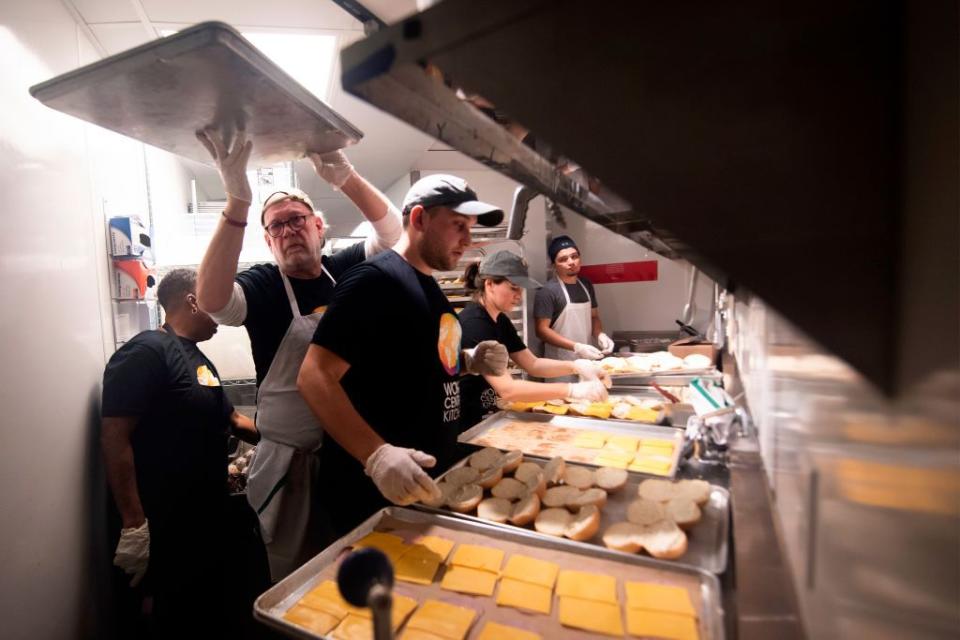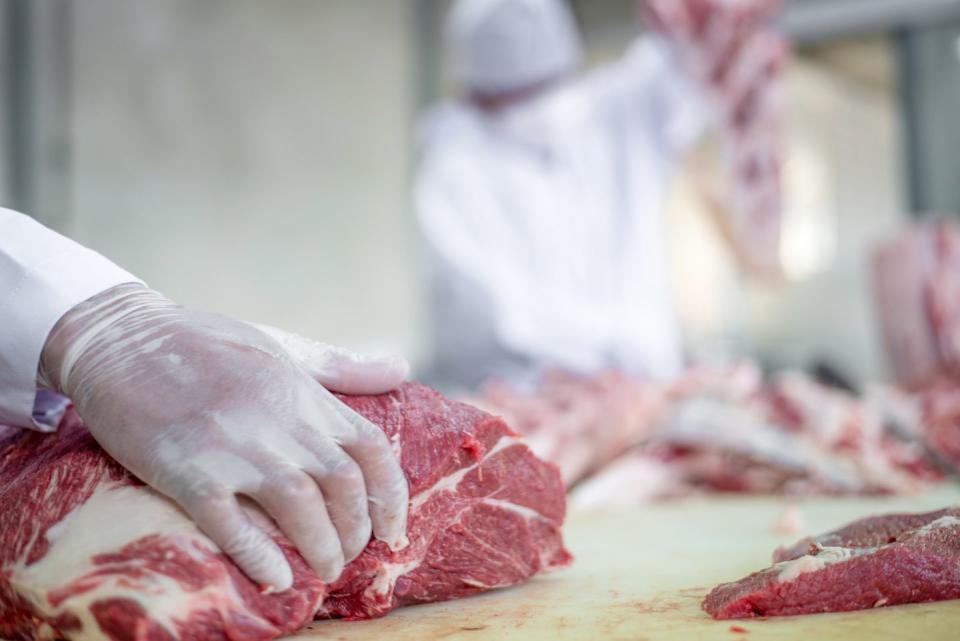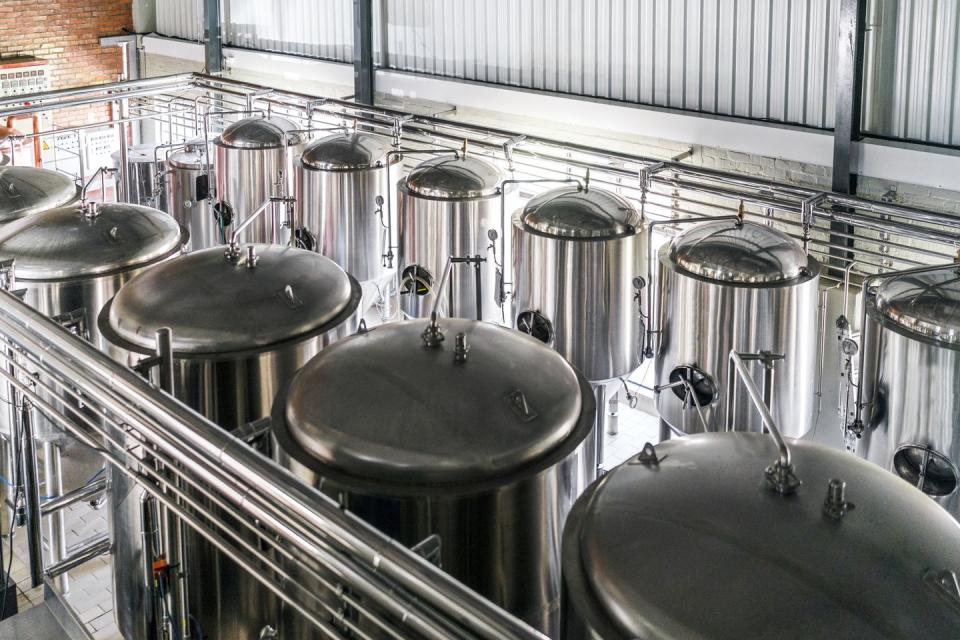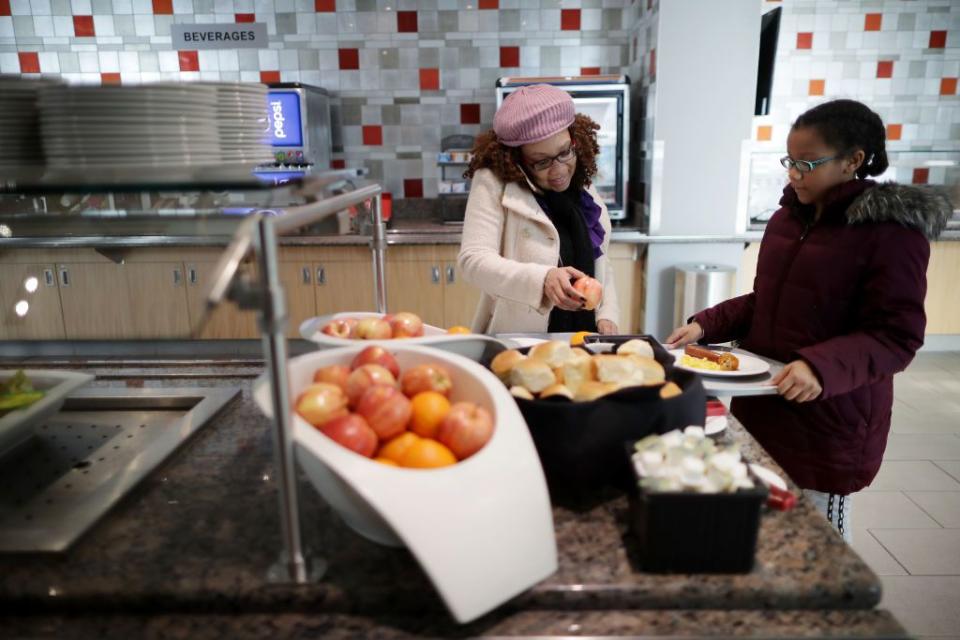[UPDATE] The Government Shutdown Is Still Affecting Food Stamp Funding Even After Its Conclusion

Update, 1/31/19, 4:18 p.m.: A new report from the Center on Budget Policy and Priorities explains that while the government shutdown has ended for the moment, it does not mean those who are dependent on SNAP funding won't still be affected.
When states went ahead and issued February benefits early in anticipation of the shutdown continuing, that created "a much longer period of time between SNAP benefits than the usual 28- to 31-day cycle," the CBPP explains. Even if some states are able to issue March funding early, "almost 60 percent [of SNAP recipients] will experience a gap of more than 45 days [between funding], and 25 percent will experience more than a 50-day gap."
Update, 1/25/19, 12:45 p.m.: While reports of federal workers and the food-stamp dependent not being able to buy groceries continue to emerge, the President told the press on the 35th day of the shutdown supermarkets should be able to "work along" with those who need food, though he did not specify how that might work. There has been no further information on whether any law that would re-open the government would include appropriation for SNAP programming.
Original story, 1/18/19: The stats about the current government shutdown are staggering: There are hundreds of thousands of people either not working or doing so without pay. It's now officially the longest shutdown in U.S. history. Major trusted outlets proclaim every day there is "no end in sight."
Here's what isn't being broadcast so widely, though: The partial government closure is affecting what you consume on an everyday basis. While federal employees are furloughed (meaning they're temporarily laid off), food safety checks aren't happening as often as they usually do. Food stamp and child nutrition programs can only be sustained so long until their current funding runs out. Even that influx of crazy new summer ale flavors you look forward to each summer? That may very well be held up, too.

Don't think any of that affects you? The prices of your groceries will soon slowly begin to rise, too. You eat food, don't you? The shutdown affects all facets of what we consume. Here’s how.
Not all necessary food safety inspections are happening.
The Food and Drug Administration initially halted safety inspections upon the announcement of the shutdown on December 22. But as of Tuesday, some employees are resuming their work without pay. The fact that food wasn't being checked for harmful bacteria panicked people, but the organization (the same one that’s had a lot of play over the past year from a strikingly high number of food recalls) was quick to clarify they would soon be back to conducting the most essential of inspections as usual. Since Tuesday, many FDA inspectors who’d been out since the beginning of the shutdown started doing just that: resuming said inspections without pay.
FDA Commissioner Scott Gottlieb continues to assure the public that though there’s less personnel working on inspecting high-risk foods like lettuces and soft cheeses (and though they’re currently working unpaid), the men and women doing the inspections are “outstanding” and “on the job.” That’s reassuring…to a point. “The FDA is currently restricted in inspection of plants,” says Dr. Simon Shane, whose degrees include a British Fellow of the Royal College of Veterinary Surgeons, Bachelor of Veterinary Science, Ph.D, Master of Business Leadership, and certification from the American College of Poultry Veterinarians.
That’s where all the alarmist “Foods You Should Avoid During The Shutdown” pieces you keep seeing are coming from. “They’re certainly not doing any elective work. They’re just doing the bare minimum,” Shane tells Delish.
The largely shuttered United States Department of Agriculture [USDA] also plays a big role in other inspections, though those have remained generally consistent throughout the shutdown: “[The Food Safety and Inspection Service] is still working effectively for red meat and poultry,” Shane explains. All of those inspections are considered essential and high-risk. Still, 11 percent of the staff responsible for those and egg-related inspections have been and remain furloughed.

Beer, wine, and liquor applications are entirely halted.
If your primary concern when it comes to drinking is whether or not you’re stocked with Natty Light, the shutdown won’t really affect you. Where it does come into play is with craft brewers, wine makers, and anyone else affiliated with the alcohol industry.
One of the agencies impacted by the partial government closure is the Alcohol and Tobacco Tax Trade Bureau (TTB), which has been closed since the beginning of the shutdown. They regulate the entire alcohol and tobacco industry, and anything companies need in order to sell beer, create new beer, or label beer goes through them. That means both existing “breweries and breweries in planning are impacted,” Federal Affairs Manager of the Brewer’s Association Katie Marisic tells Delish. And when an industry responsible for $26 billion in retail sales last year alone gets held up, so do all the people who depend on it.
Each of the 7,100 craft breweries in the U.S. has a big impact on its supply chain, “whether that’s farming or manufacturing or retail.” And while Marisic can’t speak to whether or not those who help supply and support breweries are feeling the effects of the shutdown yet, she does know they inevitably will if the TTB can't process all that’s submitted to them. Some perfectly good beer that requires TTB allowance for being sold outside its brewery and/or state is just “sitting in vats waiting for that approval to come,” meaning breweries are sitting on product. Some perfectly laid product plans for seasonal drinks might not be processed until it’s too late. Basically, whatever the summer equivalent of eggnog vodka, magnums of beer, and pumpkin ales are, they may not be out during the summer.

Wine production is looking better-for the moment. “So far, there is not a major impact, and the industry has some breathing room,” the Wine Institute’s Gladys Horiuchi says. “Wines (such as early release whites) are usually the first to be bottled from last year’s harvest, and a lot depends on where wineries happen to be in their bottling cycle.” That said, “there will be delays for new labels if this shutdown continues for a longer time. Wineries who need new label approval are being encouraged to submit applications online to get into the queue for when TTB reopens.”
According to the Brewer’s Association, the TTB processed 34,166 applications last year for new labels on malt beverages alone. (The number of wine and spirit label applications submitted in 2017 wasn’t immediately clear.) The last time a government shutdown was long enough to warrant any sort of significant federal backlog in alcohol labeling, bottling, and approval processes, the number of permits being submitted was markedly lower. The industry officially became the largest it'd ever been in 2015, but Marisic explains the TTB's staff also grew, which, until now, meant there hadn't been long turnarounds on approvals: "It’s hard to figure out how much of an impact this will have [on how quickly approvals are back up and running], but it’s also hard to compare to 2013 because so much has changed.”
What’s not hard to compare is the unmitigated ubiquity of the small beer business across the country: “There are only three Congressional districts in our country that don’t currently have small and independent breweries located in them,” Marisic confirms. “So this has the ability to impact communities and small businesses all across the country.”
The food stamp-dependent have begun to worry.
Each month, the USDA distributes benefits to 19 million households across the country that allow them to buy food; there are more than 38 million people who depend on this Supplemental Nutrition Assistance Program program (SNAP, or what’s commonly referred to as “food stamps”). When the government shut down, the funding appropriated for SNAP didn’t disappear, but there's also no guarantee it’ll continue to come through monthly either.
At the moment, all those who participate in SNAP or are newly applying for its benefits will receive their money in January, and because of the shutdown, February funds will be distributed earlier in the month than usual. The early issuance will make sure everyone who needs the funding for the whole month of February gets it, as some states distribute the money at all different times of the month.

What’s left after that is an approximately $3 billion contingency reserve that’ll be dipped into to ensure benefits continue into February. What happens next-will the remainder of that reserve be used up to distribute money to these low-income households in March?-isn't clear.
An expert in the field confirms to Delish there's no precedent for a situation like that and that it's only the Department of Agriculture and the administration who'd be able to answer that question. There is a world where if there is no appropriation for the programs, there is no program at all. Even after the government re-opens, if the law that re-opens it doesn't include funding for SNAP, there would just not be any authority for the government to fulfill those benefits, though the source hesitates to say so.
States have begun to issue statements to SNAP recipients encouraging them to not spend their early-issued benefits on a lot of food all at once. Instead, they ask people to spread the money out evenly over the course of the month.
The only other situation this expert can point to as an example of why states would issue benefits early like this? Natural disasters. The expert can only think of times when states that've anticipated hurricanes have preemptively issued benefits so people can buy food the second their stores are re-opened and they're able to get to them.
Separately, child nutrition programs (the ones that ensure kids get school breakfasts and lunches as needed) and Special Supplemental Nutrition Programs for pregnant and/or breastfeeding mothers face similar uncertainty at the moment. Though they’re separate programs, they’ve only currently received secure funding through March.
Farmers don't have access to the information they need to grow crops.
The USDA National Agricultural Statistics Service serves as a primary resource for farmers and traders to project pricing of crops, and-wait for it-it's not functioning right now. Shane calls the report one of the most accurate and impartial sources to exist in this realm. And while people can turn to other similar sources (the World Agricultural Supply and Demand Estimate, the Chicago Mercantile Exchange, etc.) so “they’re not in the dark [when it comes to what they should plan to be planting], that information isn’t necessarily as complete or maybe not as accurate” as it would be if they have access to the NASS as usual.
Not having the most complete picture is one of many reasons the country may see inflated grocery prices down the line. It means that right now, farmers and producers are “in a holding pattern,” a longtime food quality assurance professional who agreed to speak on background tells Delish: "People aren’t making any misguided decisions just yet about their crops or quantities for the year, but if the shutdown goes on for much longer, they’ll be forced to." That, in turn, leads to too much of some crops and not enough of others. That is what gives us $6 heads of lettuce, or whatever.
More urgently, though, it’s the inability to secure a federal loan right now that’s holding people up from executing their 2019 production plans: “If people need loans to, for example, buy the chickens they need to produce eggs or buy the seeds they need to plant crops, it could really throw off their plans,” says the quality insurance professional. Shane agrees the lack of security around funding for farmers could be the start of problems to come: “They need to know how much money they’re going to be given so they can make arrangements for planting in a couple of months. There’s a lot of anxiety and a lot of problems there.”
That said, Shane can’t imagine the shutdown will last much longer, meaning producers will not only have access to their usual stats again soon, but also that they’ll know their situations around funding. That said, “don’t forget-there’s going to be a catch-up. If magically this were to be resolved tomorrow [laughs], there are a lot of things that didn’t happen [during the shutdown], and they’ll have to catch up” with all the applications for funding and requests for help.
Federal workers are guaranteed to be back-paid for the shutdown. Federal contractors are not.
Among the hundreds of thousands of furloughed government workers who’ve been asked to come back to work without pay-or who’ve been working the whole time and won’t be compensated retroactively-are federal cafeteria workers. There are many who aren’t unionized, but those who do belong to a union are generally part of UNITE HERE. According to the union, they represent about 500 federal food workers, most of whom make about $30,000 a year before taxes.

A bill proposed by Maryland Democratic senators has been passed since the shutdown began, and it ensures full-time federal workers will be paid back for this period of time. That bill, which President Trump signed into law on Wednesday, did not cover low-wage contractors who’ve been furloughed or had their hours severely reduced, though.
Also on Wednesday, Democratic Minnesota Senator Tina Smith introduced a bill to try and ensure those same contractors would be back-paid for the time they worked during the partial government shutdown. At the time of this post, there is no guarantee they will be paid.
We will update this story with incoming information as the shutdown proceeds.
('You Might Also Like',)

